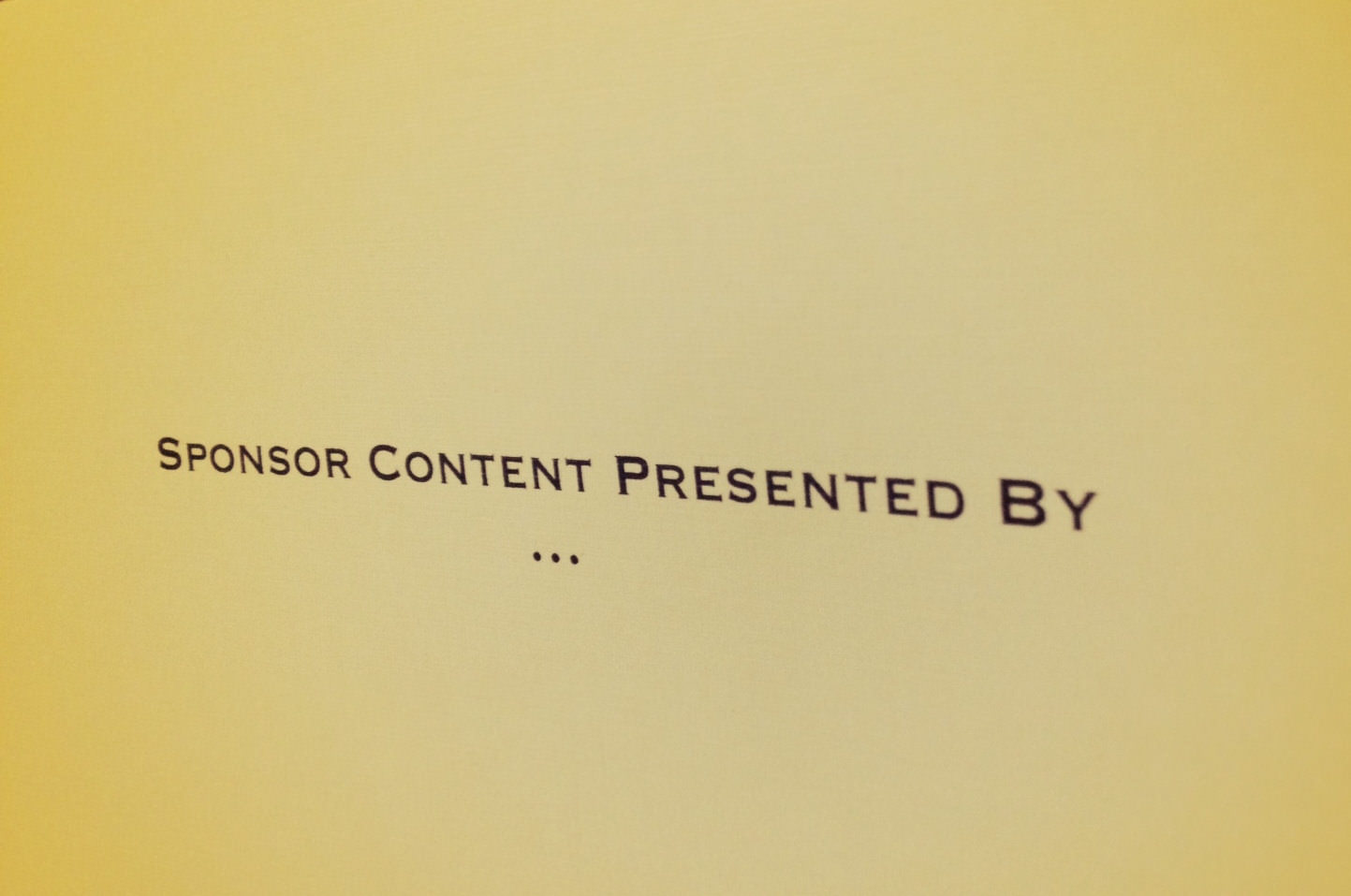
Brand advertisers have found in native advertising a new way to captivate the general public. Instead of dull old online banners, the digital equivalent of billboard, that are perceived as nuisance, native advertising turns marketing upside-down by weaving paid engaging content, that readers actually choose to read, into the visual design of magazines and newspaper.
More than half of the Online Publishers Association’s members offer native advertising, according to an OPA Press Release. Brand advertisers will spend $1.9 billion on native ads this year, up 22% from 2012, and are expected to spend upward of $3 billion by 2017.
This enticing version of infomercial has been out for a few years, but tremendous perplexity persists among publishers as to how to discharge their legal duties vis-à-vis their readers, in the context of native ads. Labeling across media platform is inconsistent and means different things to different media companies. Some publishers tell their readers when an article is sponsored but fail to mention that the advertiser had tremendous editorial control over the content – some media companies give advertisers carte blanche, letting them address their readers directly and without editorial control. Some others bury the disclosure in fine print at the bottom of the page. Others say nothing at all.
Alas, the advertising industry that has for some time successfully regulated itself has failed to reach a consensus so far. Despite having conducted several meetings throughout the summer, the Interactive Advertising Bureau’s native advertising task force has not been able to come up with a workable standard. Nevertheless, the National Advertising Division (NAD), has taken its first stab at the practice – more on this in another article.
Against the backdrop of unsuccessful self-regulation, the FTC picked up on the state of uncertainty and scheduled a workshop dedicated to native advertising, set for December 4, 2013.
“This will be an area of increased law enforcement activity in the coming year,” said Jessica Rich, Deputy Director of the Bureau of Consumer Protection.
Make no mistake; although the word “workshop” is quite innocuous, serious regulatory repercussions may ensue in the workshop’s aftermath. Indeed, the Commission’s Jessica Rich has indicated that enforcement efforts in digital marketing had become one of the agency’s top priorities. Thus, the stakes are quite high to persuasively demonstrate to the FTC that self-regulation still works.
As Adage’s Alex Kantrowitz puts it, “[t]askforces in the digital advertising industry have, at times, sat on critical issues without taking much action. For the FTC, this workshop may be a way of showing that it may not stand for inaction for long.”
One key question the workshop will address is whether consumers are able to recognize native ads as advertising. Indeed, one of the FTC’s missions is to “help ensure that consumers can identify advertisements as advertising wherever they appear.”
But here lies the problem, one reason native ads work so well is that they are ads masquerading as editorial content. Stated another way, the potential for consumer confusion is inherent to the use of native ads because their appeal derives from their ability to look like editorial article, not ads. It’s not bragging if it looks as though you are not doing the bragging yourself.
Although some consumer confusion is likely, this is not to say that native ads are to be thrown away just yet. In the contrary, publishers can effectively dispel enough confusion without giving up on their native ads revenue streams. To that end, here is my take on native ads best practices:
Best Practices.
1) Prominent And Descriptive Label. Label your native ads articles as such (“Sponsored Content” probably says it all) and use distinctive visual cues to distinguish paid content from the rest of the content by using different colors, fonts or frames.
2) Describe What Role Advertisers Played In The Content Creation. Native ads can mean anything and everything. Importantly, it probably won’t pass muster to simply label a post as sponsored when the advertiser has actual control over the editorial content. Tell your readers specifically (a) whether the advertiser wrote the article, (b) whether the advertiser wrote the article, which the publisher’s editorial team reviewed and edited or (c) whether the advertiser commissioned the article but had no editorial control.
3) The Publisher Moderates Comments, Not The Marketer. Moderating comments is a tremendous power and one simply too intimately related to the concept of censure to be left in the hands of marketers. The Atlantic learned this lesson the hard way. The magazine left that power to the Church of Scientology, which didn’t waist time using it to censor some of the negative reaction. This, of course, hurt the credibility and integrity of the magazine, which repented and has since become one of the more diligent actors in the area – the Atlantic enacted a native advertising guideline and simply won’t let advertisers monitor comments anymore.
4) Draft A Binding Code Of Ethics. To maintain editorial objectivity, some lines must be drawn between teams working on native ads and those dedicated to traditional content.
Summing Up.
Following these steps is likely to address the FTC’s main concerns: making sure consumers are not deceived or treated unfairly. This is attainable without rendering native ads irrelevant. After all, native ads need not trick people to be valuable. At its best, native ads are objectively better than boring TV commercials; they fuel the production of high quality engaging articles.
Native advertising should be “content that is so good, and so valuable, that the community finds it useful and compelling even when they know it’s sponsored or advertising,” as Mike Masnick, Techdirt’s editor, wrote.
[During the government shutdown, temporary link to FTC’s Press Release is available here.]

